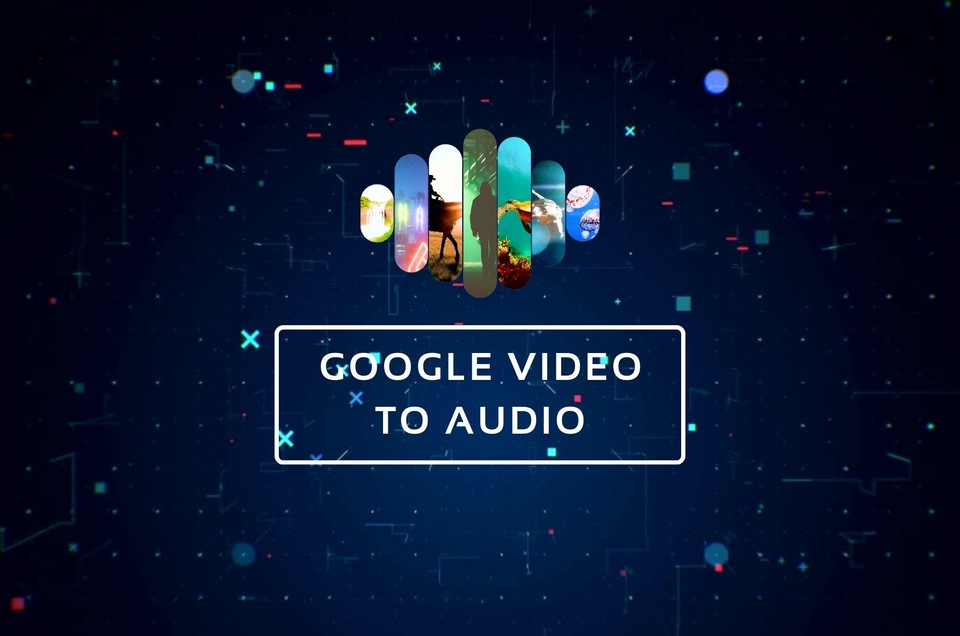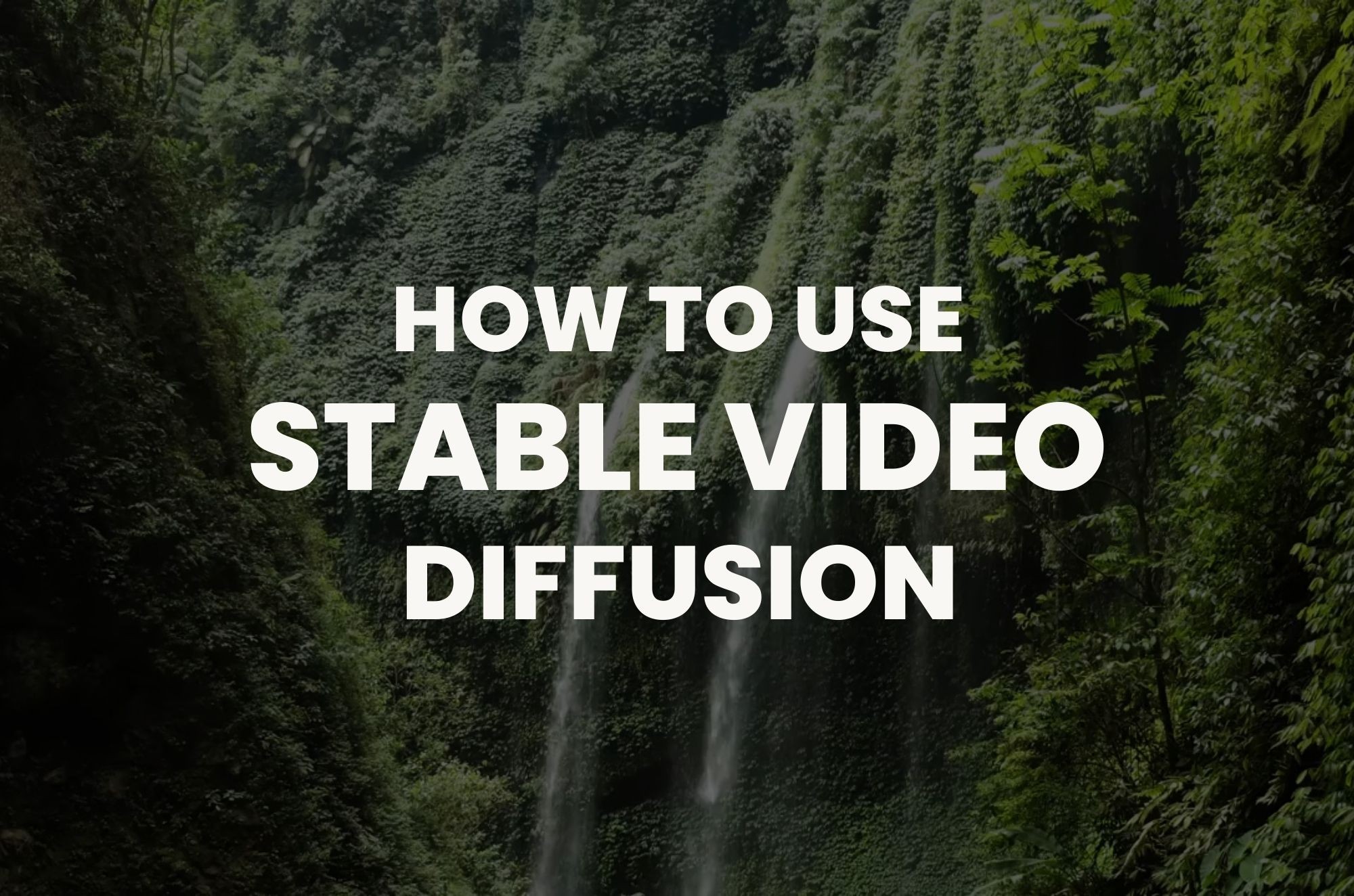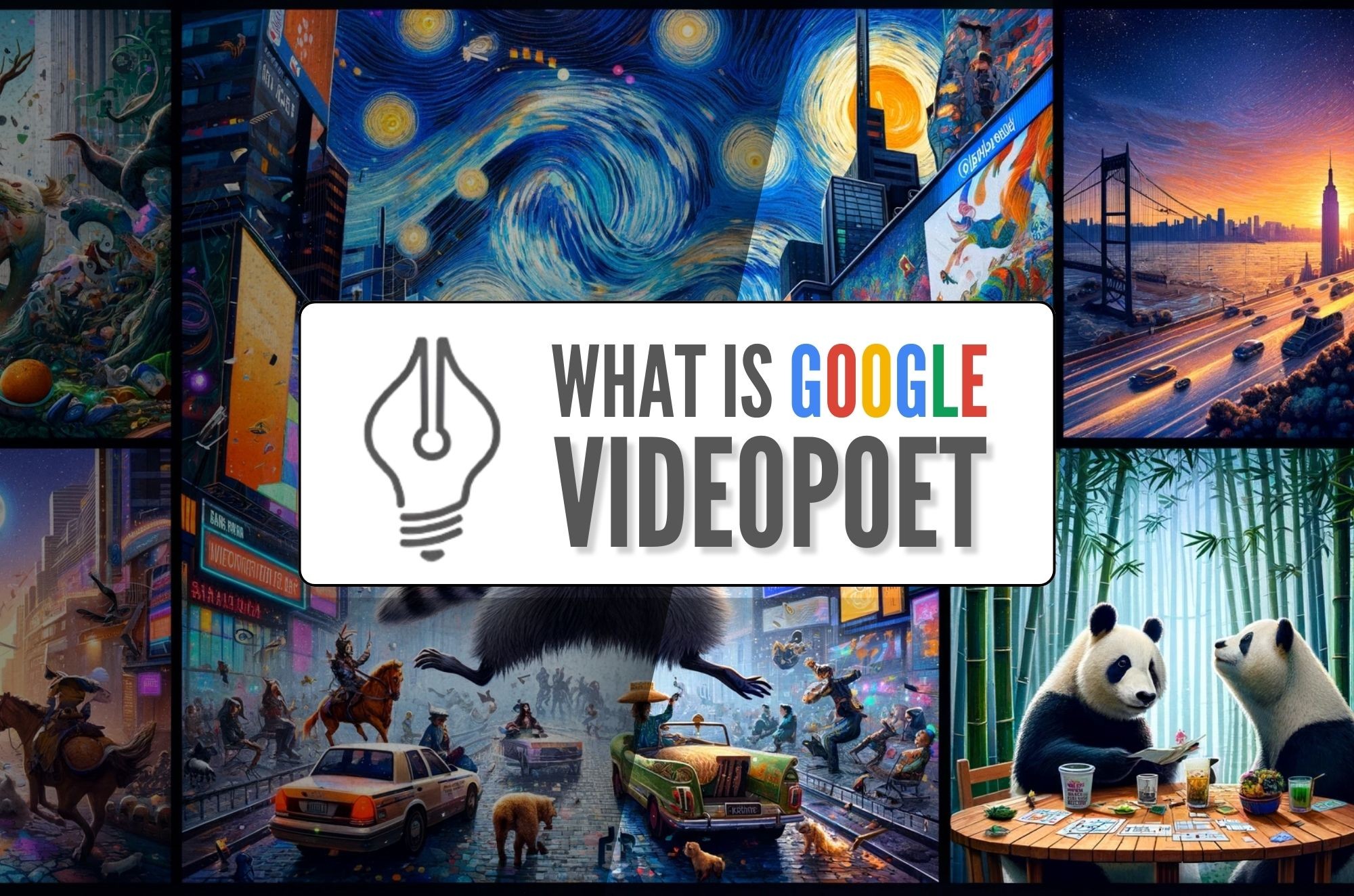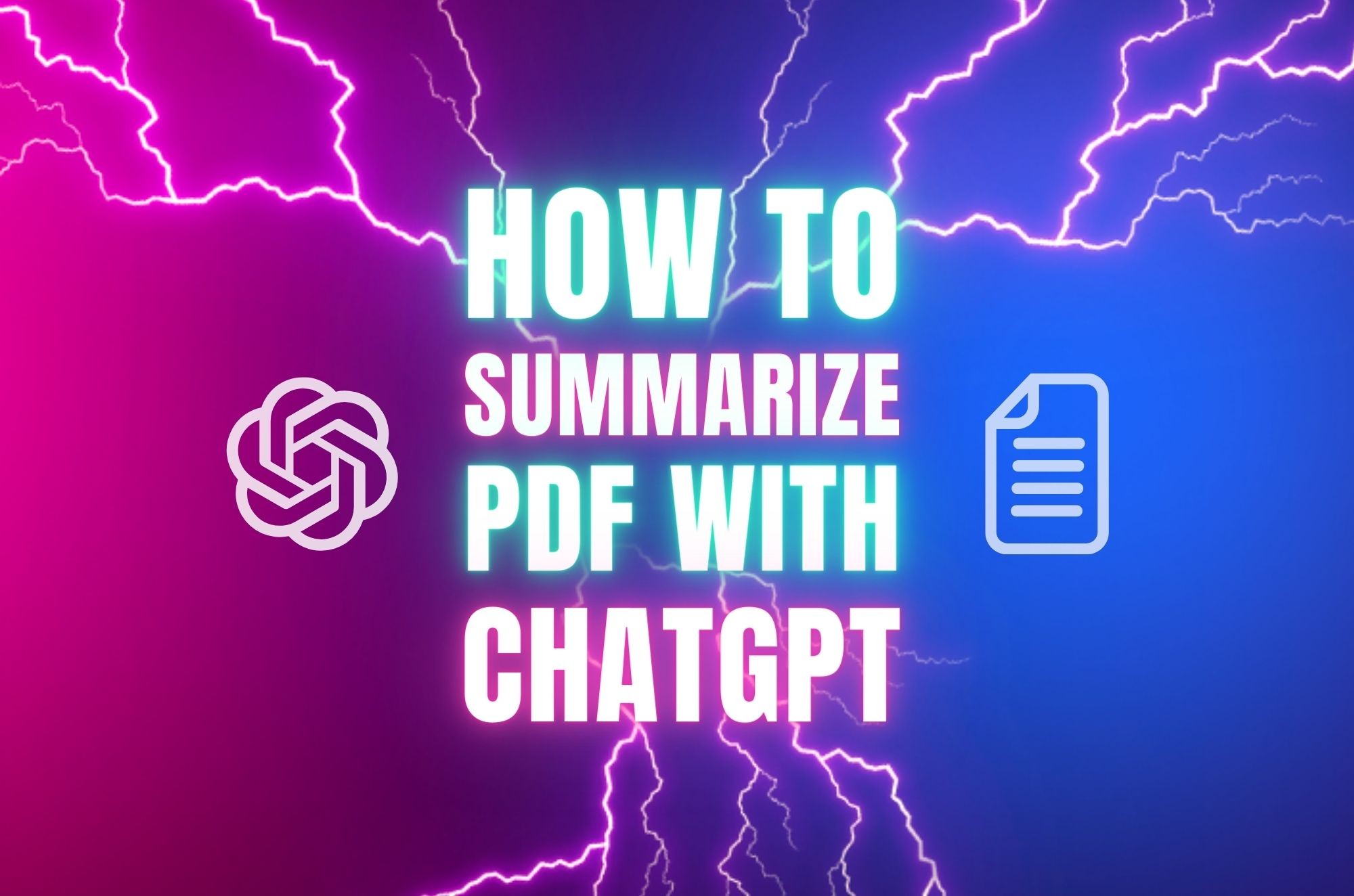Introduction
The global generative AI market is skyrocketing, valued at a staggering $44.89 billion. With 92% of Fortune 500 companies already leveraging generative AI, it's clear that this technology is transforming industries worldwide. Among the groundbreaking innovations in this space is Google's Video-to-Audio (V2A) technology, a tool that promises to revolutionize how we experience video content. This cutting-edge technology not only breathes life into silent videos by generating synchronized soundtracks but also offers unparalleled creative control and flexibility for content creators. In this blog post, we'll delve into how Google's V2A technology works, its key features, applications, and future for the media landscape.

Understanding Google's Video-to-Audio Technology
What is Google's Video-to-Audio Technology?
Google's Video-to-Audio (V2A) technology is an innovative AI-driven solution that generates rich, synchronized audio for video content. By analyzing video pixels and leveraging natural language text prompts, V2A creates soundtracks that enhance the overall viewing experience.
Why Audio is Essential for Video Content
Audio plays a critical role in making video content engaging and immersive. High-quality soundtracks, including sound effects, music, and dialogue, can:
-
Enhance Emotional Impact: Music and sound effects can evoke emotions and set the tone.
-
Improve Viewer Retention: Engaging audio keeps viewers interested and reduces dropout rates.
-
Provide Context: Sound can clarify actions and settings that may not be immediately obvious from visuals alone.
How V2A Addresses Current Limitations
We're sharing progress on our video-to-audio (V2A) generative technology. 🎥 It can add sound to silent clips that match the acoustics of the scene, accompany on-screen action, and more. Here are 4 examples - turn your sound on. 🧵🔊 https://t.co/VHpJ2cBr24pic.twitter.com/S5m159Ye62
— Google DeepMind (@GoogleDeepMind) June 17, 2024
Many current video generation models produce silent videos, leaving much to be desired regarding user experience. Google's V2A technology addresses this by:
-
Generating Rich Soundscapes: Combines video visuals with text prompts to create detailed audio.
-
Synchronizing Audio and Visuals: Ensures sound effects and dialogue match the on-screen action.
Key Benefits of Google's V2A Technology
-
Seamless Integration: Works with video generation models like Veo for a cohesive audiovisual output.
-
Versatile Applications: Suitable for various types of footage, from traditional films to archival material.
-
Enhanced Creative Control: Allows users to experiment with different audio outputs and choose the best match for their video content.
By understanding the capabilities and benefits of Google's V2A technology, it's clear why this innovation is set to change the way we produce and experience video content.
How V2A Technology Works
The Technology Behind V2A
Google's Video-to-Audio (V2A) technology employs advanced AI methodologies to create synchronized audio for videos. Here's a closer look at how it all comes together:

Diffusion-Based Approach
V2A uses a diffusion-based approach for audio generation. This involves:
-
Iterative Refinement: The model starts with random noise and refines it step-by-step.
-
Guidance from Visual Input: The process is guided by the video's visual data to ensure the audio aligns perfectly with on-screen actions.
-
Natural Language Prompts: Text prompts can be used to specify the type of sounds desired, enhancing the accuracy and relevance of the generated audio.
Steps in the V2A Process
-
Encoding Video Input:
-
The video is encoded into a compressed representation that the model can process.
-
-
Generating Audio:
-
The diffusion model begins with random noise and iteratively refines it to create realistic audio.
-
This process is guided by both the visual input and any text prompts provided.
-
-
Decoding and Synchronization:
-
The refined audio is decoded into an audio waveform.
-
This waveform is synchronized with the video to ensure perfect alignment.
-
This ensures any generated sounds can align effectively with the original video, while suiting the tone and mood. 🎵 Results are also more realistic - whether it's the ambient sounds of nature or a futuristic city, to dramatic scores. → https://t.co/VHpJ2cBr24pic.twitter.com/51jembxi0G
— Google DeepMind (@GoogleDeepMind) June 19, 2024
Integration with Veo and Other Models
V2A technology is designed to work seamlessly with video generation models like Google Veo. This integration allows for:
-
Comprehensive Audiovisual Output: Combines high-quality video and audio for a complete viewing experience.
-
Consistent Style and Tone: Ensures that the audio matches the characters and overall tone of the video content.
Key Technical Features
-
Flexible Audio Generation:
-
V2A can produce an unlimited number of soundtracks for any given video input.
-
Users can guide the output with positive and negative prompts to achieve the desired audio effect.
-
-
High-Quality Output:
-
By training on extensive datasets, including video, audio, and AI-generated annotations, V2A produces realistic and compelling audio.
-
The technology learns to associate specific sounds with visual scenes, enhancing the overall quality and relevance of the audio.
-
Challenges and Ongoing Improvements
While V2A is a significant advancement, there are still challenges to address:
-
Video Quality Dependence: The quality of the audio output is highly dependent on the video input. Videos with artifacts or distortions can lead to lower audio quality.
-
Lip Synchronization Issues: Synchronizing dialogue with lip movements remains a challenge, especially when the video generation model isn't conditioned on transcripts.
By leveraging these advanced techniques and continually improving the technology, Google's V2A is poised to transform the way we experience video content, making it more immersive and engaging than ever before.
Key Features of Google's Video to Audio (V2A)
Google's Video-to-Audio (V2A) technology boasts several cutting-edge features that set it apart in the realm of AI-generated media. These features are designed to enhance the creative process and provide high-quality, synchronized audio for various types of video content.
From producing environmental sounds to rich background scores, V2A can help create unlimited audio options for videos from scratch. 🎶 Here’s a look into its capabilities. 🧵 pic.twitter.com/7r53E0rq9b
— Google DeepMind (@GoogleDeepMind) June 19, 2024
1. Customizable Audio Output
One of the standout features of V2A is its ability to generate customizable audio outputs. This flexibility is crucial for creators looking to tailor the audio to specific needs and preferences.
-
Positive and Negative Prompts:
-
Positive Prompts: Guide the AI in including desired sounds in the output.
-
Negative Prompts: Steer the AI away from including unwanted sounds.
-
-
Experimentation: Allows users to rapidly test different audio outputs and select the best match for their video.
2. Seamless Synchronization
Ensuring that audio is perfectly synchronized with video is a critical aspect of V2A technology. This feature enhances the viewer's experience by providing cohesive audiovisual content.
✍️ Prompt for audio: “A drummer on a stage at a concert surrounded by flashing lights and a cheering crowd.” pic.twitter.com/z0N8sbbsEU
— Google DeepMind (@GoogleDeepMind) June 17, 2024
-
Auto-Alignment: V2A automatically synchronizes sound effects, music, and dialogue with on-screen actions.
-
Natural Language Prompts: Helps in generating audio that matches the specific context and tone of the visual content.
3. High-Quality Soundscapes
The diffusion-based approach used by V2A ensures that the audio generated is realistic and compelling. By training on extensive datasets, V2A can produce high-quality soundscapes that enhance the overall video experience.
✍️ Prompt for audio: “Wolf howling at the moon.” pic.twitter.com/chH1rmPw90
— Google DeepMind (@GoogleDeepMind) June 17, 2024
-
Rich Audio Output: Includes detailed sound effects, background scores, and clear dialogue.
-
Data-Driven: Utilizes video, audio, and AI-generated annotations to refine and perfect the audio output.
4. Versatile Applications
Google's V2A technology is not just limited to new video content; it can also be applied to a variety of traditional and historical footage, broadening its usability.
✍️ Prompt for audio: “A slow mellow harmonica plays as the sun goes down on the prairie.” pic.twitter.com/48wMRGzLBh
— Google DeepMind (@GoogleDeepMind) June 17, 2024
-
Traditional Footage: Enhances existing films, documentaries, and video projects with rich audio.
-
Archival Material: Brings life to silent films and historical footage by adding relevant soundtracks.
-
Creative Opportunities: Opens up new avenues for filmmakers, content creators, and educators.
By incorporating these innovative features, Google's V2A technology provides a robust tool for creating immersive and engaging video content. Its customizable audio output, seamless synchronization, and ability to generate unlimited soundtracks make it an invaluable asset for anyone involved in video production.
Future Prospects and Ethical Considerations
The Future of Video-to-Audio Technology
As Google's Video-to-Audio (V2A) technology continues to evolve, its potential impact on the media landscape grows. Future advancements promise even greater enhancements in the quality and capabilities of V2A.
Ongoing Research and Potential Improvements
Google is actively investing in research to address current limitations and expand the capabilities of V2A technology.
-
Improved Audio Quality: Enhancing the model to produce high-quality audio, even from videos with artifacts or distortions.
-
Better Lip Synchronization: Refining algorithms to ensure dialogue matches character lip movements more accurately.
-
Expanded Training Data: Incorporating more diverse datasets to improve the model's versatility and robustness.
Ethical Considerations
With great technological advancements come significant ethical responsibilities. Google is committed to ensuring that V2A technology is developed and deployed responsibly.
All audio generated by V2A is watermarked using our cutting-edge toolkit SynthID. 🔍 We also recognize the potential for misuse of audio generation, and continue to gather feedback from creators, filmmakers and others to refine our technologies. pic.twitter.com/asGnlTQ43L
— Google DeepMind (@GoogleDeepMind) June 19, 2024
-
Preventing Misuse: Incorporating SynthID technology to watermark AI-generated content and prevent potential misuse.
-
Transparency: Maintaining transparency about how V2A technology is developed and used.
-
Data Privacy: Ensuring that any training data used respects copyright laws and data privacy standards.
Commitment to Responsible Development
Google's approach to V2A technology is guided by a commitment to responsible AI development, which includes rigorous safety assessments and feedback from the creative community.
-
Safety Assessments: Conducting thorough evaluations to identify and mitigate risks associated with V2A.
-
Creative Community Engagement: Gathering insights from filmmakers, content creators, and industry experts to inform ongoing development.
-
Feedback Integration: Using feedback to refine V2A technology and address real-world challenges.
Impact on the Creative Industry
V2A technology holds the potential to revolutionize the creative industry, but it also raises important questions about its impact on jobs and professional practices.
-
Empowering Creators: Providing powerful tools to enhance creativity and productivity.
-
Industry Disruption: Addressing concerns about job displacement and ensuring fair labor practices.
-
New Opportunities: Creating new roles and opportunities in the evolving media landscape.
Conclusion
As Google's V2A technology continues to advance, it promises to bring big changes to the way we produce and experience video content. By prioritizing ethical considerations and engaging with the creative community, Google aims to ensure that V2A technology contributes positively to the future of media.
In conclusion, the future of Google's Video-to-Audio technology is bright, with ongoing research and ethical considerations at the forefront of its development. This commitment to responsible innovation will help ensure that V2A technology remains a valuable asset for creators and audiences alike.



